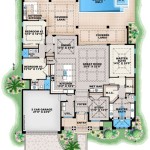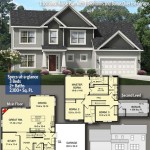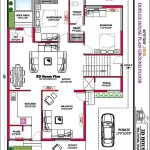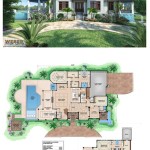Simple Bluebird House Plans: Free Printable Guides for Bird Lovers
Attracting bluebirds to a backyard requires providing suitable nesting habitats. Providing handcrafted bluebird houses can be an effective way to support local bluebird populations. Fortunately, numerous resources exist that offer free, printable bluebird house plans, enabling individuals to construct these essential structures. These plans typically incorporate specific dimensions and design features crucial for the safety and comfort of bluebirds while deterring other less desirable species.
The availability of free, printable bluebird house plans democratizes conservation efforts. Individuals with basic woodworking skills and access to common tools can contribute to the well-being of bluebirds by constructing and deploying these houses in appropriate locations. Understanding the intricacies of bluebird house design is essential for maximizing the effectiveness of these efforts. This article explores key aspects of bluebird house construction, focusing on the accessibility and utility of free printable plans.
Understanding Key Design Considerations for Bluebird Houses
Several critical design elements contribute to the successful occupancy of a bluebird house by bluebirds. These considerations involve size, entrance hole diameter, ventilation, drainage, and material selection. Adhering to these specifications ensures the house is safe, comfortable, and attractive to bluebirds.
The internal dimensions of the bluebird house are significant. A floor space of approximately 5 inches by 5 inches is generally recommended. This provides adequate space for the bluebird nest and developing nestlings. Insufficient space can lead to overcrowding and premature fledging, while excessive space might encourage other, larger birds to occupy the house.
The entrance hole diameter is arguably the most critical feature. A 1.5-inch diameter hole is ideal for Eastern Bluebirds, preventing larger birds like starlings from entering and competing for the nesting site. Smaller holes, while deterring larger birds, might also prevent bluebirds from accessing the house. Positioning the entrance hole is also important; it should be located a few inches below the roof to provide some protection from the elements.
Ventilation is essential for maintaining a comfortable temperature inside the house, particularly during hot weather. Small ventilation holes near the roof allow for air circulation, preventing the house from overheating. These holes should be small enough to prevent rain from entering and affecting the nest.
Drainage holes in the floor of the house prevent water from accumulating. This is particularly important in areas with heavy rainfall or humidity. Standing water can create an unhealthy environment for the nestlings and promote the growth of harmful bacteria.
Material selection is another crucial aspect of bluebird house construction. Untreated wood, such as cedar or pine, is generally recommended. Treated lumber can contain chemicals that are harmful to bluebirds. The wood should be at least ¾ inch thick to provide adequate insulation. Avoid using plywood, as it can delaminate over time and is less durable than solid wood.
The roof of the bluebird house should extend beyond the sides and front to provide protection from rain and sun. An overhanging roof helps to keep the entrance hole dry and shaded. The roof should also be slightly slanted to allow water to run off easily.
A hinged or removable side or roof is essential for monitoring and cleaning the bluebird house. Regular cleaning helps to remove old nesting material and parasites, increasing the likelihood of bluebirds returning to the house in subsequent years. The access panel should be easy to open and close securely.
Finally, avoid adding perches below the entrance hole. Perches can actually be detrimental, as they provide leverage for predators like squirrels or raccoons to access the nest. Bluebirds do not need perches to enter the house; they can easily fly directly to the entrance hole.
Navigating Free Printable Bluebird House Plans
Numerous online resources offer free, printable bluebird house plans. These plans vary in complexity, ranging from simple, one-board designs to more elaborate multi-piece constructions. When selecting a plan, consider one's woodworking skill level, available tools, and desired aesthetic.
Many reputable organizations, such as state wildlife agencies, conservation groups, and woodworking websites, offer reliable and accurate bluebird house plans. These plans often include detailed instructions, diagrams, and cutting lists. It is crucial to verify the accuracy and completeness of the plan before beginning construction. Look for plans that clearly specify the dimensions, materials, and assembly steps.
Before printing a plan, review it carefully to ensure it meets one's needs. Consider the overall size and shape of the house, the placement of the entrance hole, and the accessibility for cleaning. Ensure the plan includes provisions for ventilation and drainage. If unsure about any aspect of the plan, seek clarification from a knowledgeable source.
When printing the plan, use a high-quality printer and paper to ensure the dimensions are accurate. Double-check the printed measurements against a ruler or measuring tape. Any discrepancies should be corrected before cutting the wood.
Many plans are formatted as PDF documents, which are easily printable and viewable on most computers. Some plans may also be available in other formats, such as CAD files, which can be used with specialized woodworking software. Choosing the right format depends on one's technical skills and available resources.
Another useful feature of some online plans is the inclusion of user reviews or comments. These reviews can provide valuable insights into the ease of construction, the effectiveness of the design, and any potential problems that others have encountered. Reading these reviews can help to avoid common mistakes and improve the overall outcome.
Some plans also offer variations or modifications to the basic design. These variations might include different roof styles, alternative access panel designs, or adaptations for specific geographic regions. While these variations can add aesthetic appeal or functional improvements, it's important to ensure they do not compromise the essential design features that are crucial for bluebird occupancy and safety.
Ultimately, selecting the right free, printable bluebird house plan involves careful consideration of one's skills, resources, and the specific needs of the local bluebird population. By choosing a well-designed and accurate plan, and by following the instructions carefully, one can contribute to the conservation of these beautiful birds.
Optimizing Bluebird House Placement and Maintenance
The location of a bluebird house significantly impacts its likelihood of being occupied by bluebirds. Factors such as habitat, proximity to other structures, and orientation to sunlight and wind should be carefully considered.
Bluebirds prefer open habitats with scattered trees and shrubs. Avoid placing bluebird houses in dense forests or heavily wooded areas. Ideal locations include fields, pastures, and yards with large, open spaces. Bluebirds also require access to perches, such as fences or tree branches, from which they can hunt for insects.
Minimize competition from other bird species by placing bluebird houses away from areas frequented by house sparrows or European starlings. These non-native species can be aggressive competitors for nesting sites and may even kill bluebird nestlings. Maintaining a distance of at least 100 feet from buildings or other structures can help to reduce competition from these species.
Orienting the entrance hole of the bluebird house away from prevailing winds and harsh sunlight is crucial for maintaining a comfortable temperature inside the house. In most areas, facing the entrance hole to the east or southeast is recommended. This allows the house to receive morning sun while avoiding the intense heat of the afternoon sun.
Mounting the bluebird house at an appropriate height is also important. A height of 5 to 10 feet above the ground is generally recommended. Mounting the house on a pole or post is preferable to attaching it directly to a tree, as this makes it more difficult for predators to access the nest. Use predator guards, such as baffles or cones, to further protect the house from climbing animals.
Regular monitoring and maintenance are essential for ensuring the long-term success of a bluebird house. Check the house regularly for signs of occupancy by bluebirds or other animals. Remove any unwanted nests or debris promptly. Clean the house thoroughly after each nesting season to remove old nesting material and parasites.
Keep detailed records of bluebird activity at the house. Note the dates of nest building, egg laying, hatching, and fledging. This information can be valuable for tracking bluebird populations and assessing the effectiveness of conservation efforts.
Repair any damage to the bluebird house promptly. Replace broken or missing parts, and repaint the exterior if necessary. Maintaining the house in good condition will ensure it continues to provide a safe and comfortable nesting site for bluebirds for many years to come.
Avoid using pesticides or herbicides near the bluebird house. These chemicals can be harmful to bluebirds and their nestlings. Encourage natural pest control methods, such as attracting beneficial insects, to maintain a healthy environment around the house.
Finally, educate others about the importance of bluebird conservation. Share information about bluebird house construction, placement, and maintenance with friends, neighbors, and community groups. By working together, one can help to ensure the survival of these beautiful and beneficial birds.

Free Bluebird House Plans Multiple Designs

Bluebird Birdhouse Plans Complete Step By Instructions For Building A Bird House

Plans Birdhouse For Bluebirds Grinder Jig

Birdhouse And Nest Box Plans For Several Bird Species The Birders Report

Bluebird House Plans Free Construct101

Free Bird House Plans Bluebird Purple Martin Wren More

Diy Bluebird Approved Birdhouse Tutorial Fanningsparks

Free Bluebird House Plans Audubon Nesting Box Tutorial

Bluebird Birdhouse Plans Complete Step By Instructions For Building A Bird House

How To Make A Diy Bluebird House Birds And Blooms








